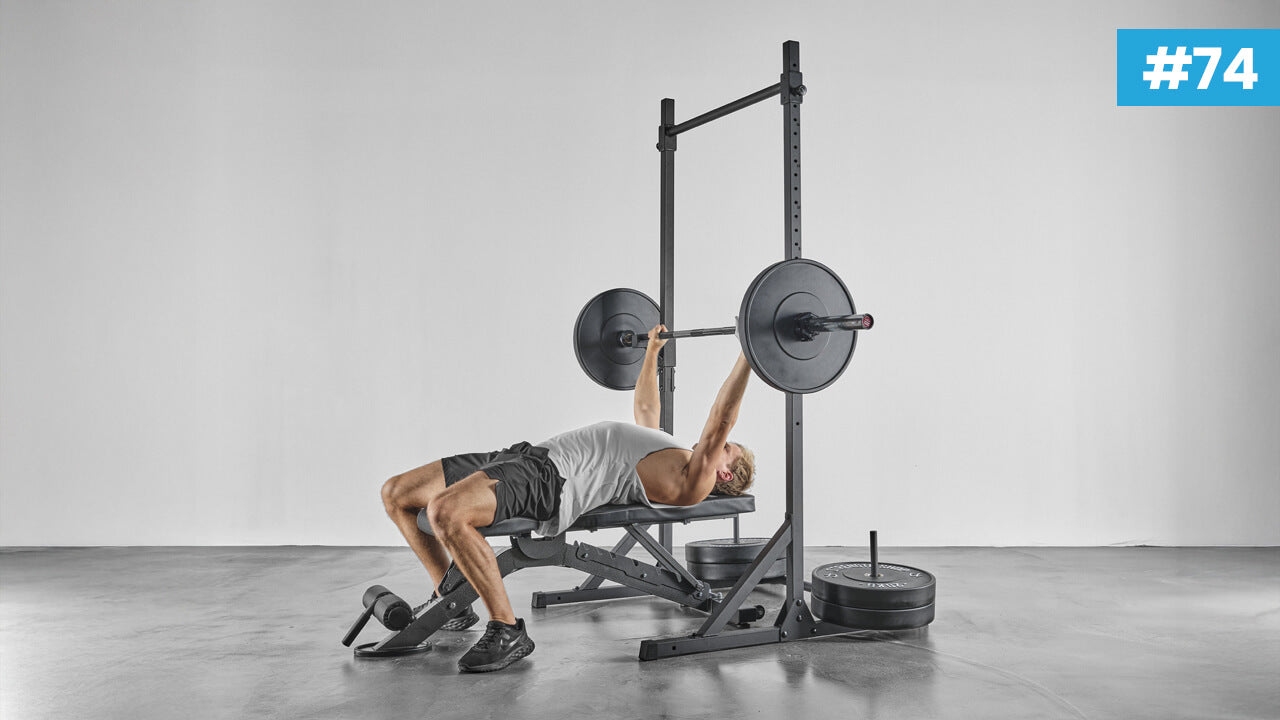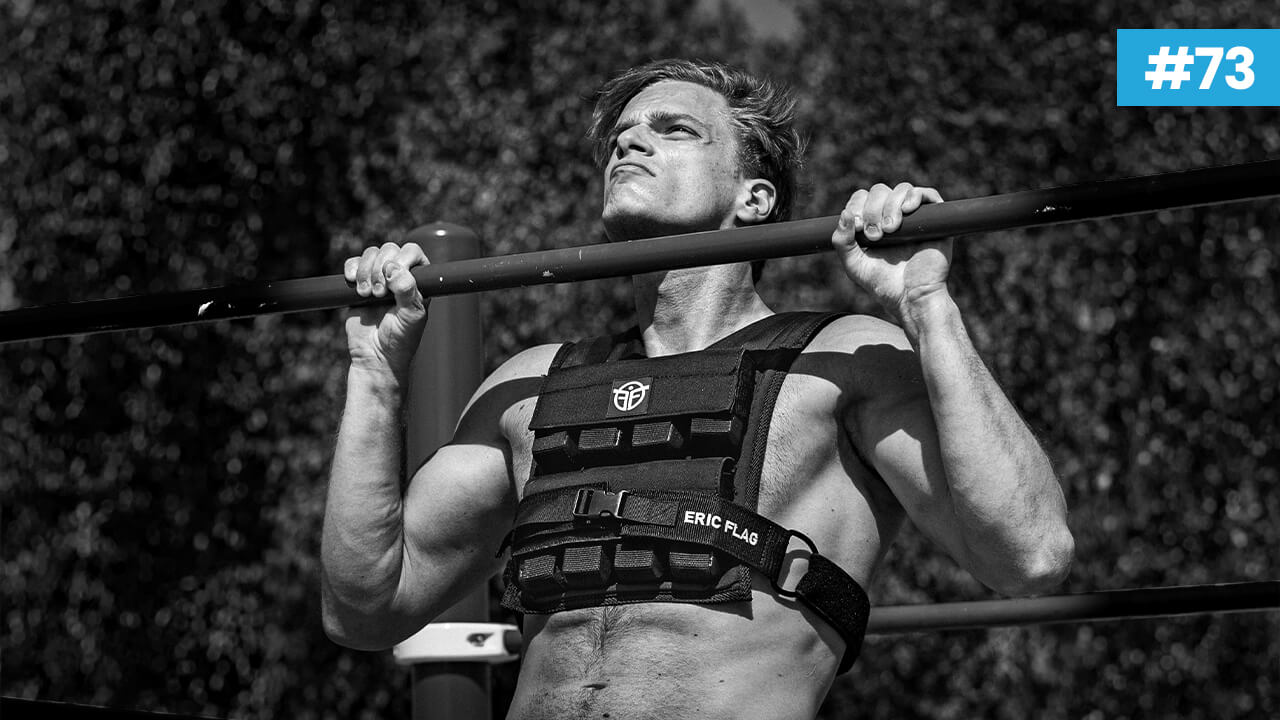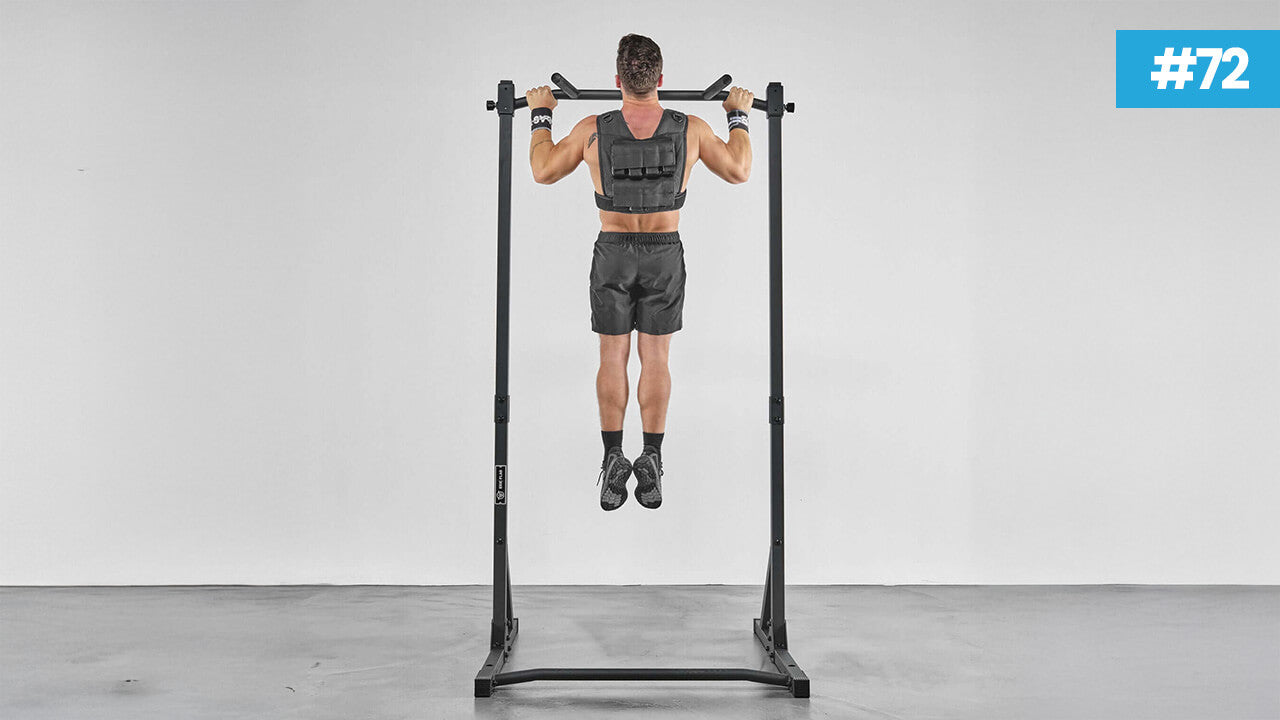How to start and progress with weighted pull-ups? The complete guide!
Weighted pull-ups are one of the best ways to gain strength, muscle mass and explosiveness for the back.
But when should you start? What weight should you use? And how can you progress without injury?
👉 In this article, you'll discover everything you need to know to get started with weighted pull-ups: prerequisites, training frequency, ideal progression and mistakes to avoid.
Let's go!
Why do weighted pull-ups?
Weighted pull-ups involve adding an external load, via a weight belt or weighted vest, to increase resistance during exercise.
They allow you to :
-
Develop your maximum strength on the pulling movement.
-
Stimulate weight gain in the back, biceps (if supinated) and forearms.
-
Improve your technique on strict pull-ups.
-
Prepare advanced callisthenic movements such as the muscle-up.
Clearly, if you want to pull harder, longer and with more control, weighted pull-ups are a must 💪
When should you start weighted pull-ups?
Before adding weight, make sure you have a solid base.
You can start weighted pull-ups as soon as you've mastered 8 to 10 strict bodyweight pull-ups over 3/4 sets in a row, with your own technique (arms straight down, chin over the bar).
If you achieve less, work on bodyweight strength first:
-
series of controlled pull-ups
-
eccentric variants (slow descent)
-
horizontal pulls or Australian pull-ups
The aim is not to go fast, but to have a solid technique before adding ballast.
What equipment should I use for weighted pull-ups?
You have two main options:
1. Ballast belt

The weighted belt is the most popular solution for weighted pull-ups. You attach a disc, kettlebell or load via a chain or rope.
✅ Advantages :
-
Ideal weight distribution
-
Perfect for heavy loads
-
Easy to adjust between series
2. Weighted vest

The weighted vest is ideal for more functional work or lighter loads. It's practical, compact and comfortable for dynamic workouts.
✅ Advantages :
-
Greater comfort and stability
-
Ideal for circuits or supersets
-
Even weight distribution across the body
What weight should you choose to start with?
That's THE big question.
It all depends on your current level, but here's a simple baseline:
| Level | Recommended weight | Target number of repetitions |
|---|---|---|
| Beginner | +5 to +10% of your body weight | 4 to 8 reps |
| Intermediate | +10 to +20% of body weight | 3 to 6 reps |
| Advanced | +25 to +40% of body weight | 2 to 4 reps |
Always start light, and look for control before adding weight.
Example: if you weigh 70 kg, start with a maximum of 7 kg of ballast, then gradually increase.
How do you structure your training?
To progress effectively, frequency is as important as load.
👉 2 sessions of weighted pull-ups per week are more than enough.
Example of structure:
-
Session 1 - Strength: 4×4 heavy weighted pull-ups
-
Session 2 - Volume: 4×8 lighter pull-ups
Always leave a minimum of 48 hours' rest between two heavy pull-ups.
Simple and effective progression method

The best approach is double progression:
-
Start with a fixed load (e.g. +10 kg)
-
Increase reps first (from 4 to 6 reps per set)
-
Once you've reached the top of the range, increase the load slightly (+2 to +2.5 kg).
-
Return to 4 reps, and repeat the cycle.
This method ensures constant, injury-free progress.
Example of a 6-week program
Here's an "example" to help you structure your progression:
| Week | Load | Series x Reps |
|---|---|---|
| 1 | +5 kg | 3×6-8 |
| 2 | +5 kg | 4 ×6-8 |
| 3 | +7.5 kg | 3×6-8 |
| 4 | +7.5 kg | 4 ×6-8 |
| 5 | +10 kg | 4 ×6-8 |
| 6 | Déload (rest / lightness) | 3×5 @ +5 kg |
After 6 weeks, do another test: you'll be surprised at the strength gain 💪
Common mistakes to avoid
Even advanced practitioners can fall into these traps:
❌ Load too fast → Risk of injury and rapid stagnation.
❌ Incomplete amplitude → Always lower arms straight.
❌ Absent gainage → Engage your abs with every rep.
✅ Focus on the quality of the movement: clean weighted pull-ups are better than sloppy reps.
Additional exercises for faster progress
Use these exercises to strengthen your grip and gain strength:
-
Weighted Australian pull-ups: improve your scapular control
-
Face pull & horizontal pulls: balancing the shoulder
-
Sheathing: for better core stability
These movements will support your progress on weighted pull-ups while reducing the risk of injury.
When and how to unload?
Every 5 to 6 weeks, do a deload week:
-
Reduces the load by 30 to 40%.
-
Reduces total volume
-
Focus on technique and speed of execution
This is the key to avoiding nervous fatigue and continuing to make progress over the long term.
FAQ: everything you need to know about weighted pull-ups
When should you start weighted pull-ups?
➡️ As soon as you've mastered 8 to 10 clean, strict pull-ups.
What equipment should I choose?
➡️ A weight belt is ideal for beginners, while a weighted vest is ideal for dynamic movements.
How many times a week?
➡️ Two sessions are enough to make progress without overloading the joints.
Do you need to vary the grips?
➡️ Yes, alternate pronation, neutral and supination to balance the muscular work.
How do you know if the load is right?
➡️ If you finish your last set with a margin of 1 to 2 reps, you're in the right zone.
In conclusion: patience always pays off
With a solid base, the right equipment and intelligent progression, you can quickly become stronger, more massive and more explosive.
Start light, be consistent, record your sessions and celebrate every kilo gained.
You'll see: weighted pull-ups will quickly become your favorite exercise 💪
I hope this article has helped you see things more clearly!
If so, please feel free to comment and share.
See you soon,
Eric Flag.





Leave a comment
This site is protected by hCaptcha, and hCaptcha's Privacy Policy and Terms of Service apply.